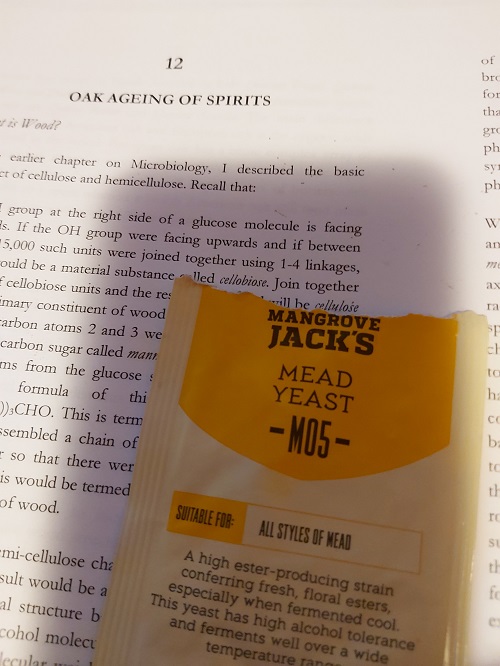
Recently I took a break from updating my Field to Flask book. I used this brief break to make a batch of raspberry mead. I used 1/3 tap water from Mossbank, SK where I reside and 2/3 RO water. I added some additional CaCl2 as well. By my calculations I had close to 100 ppm Calcium in my process water. I decided to use a yeast I had never heard of before called Mangrove Jack’s Mead Yeast. It is made in new Zealand from what the package says. The best before date on the packet is Dec 2021, the attenuation is listed as high and the floculation as high. My OG was 1.080 which according to the yeast packet is suitable for the yeast which is alcohol tolerant to 18%. The ferment was slow, taking 15 days to ferment. I have since moved the mead into a keg and it is carbonating now. I am disappointed with the floculation of the yeast. For sure, it does not rate as high my by observations. According to the yeast book of knowledge by Boulton & Quain, yeast will floculate and drop to the bottom of the fermenter because surface proteins on the yeast cell will bind to carbohydrate receptors on neighboring cells. There are a series of genes that have been identified ( the FLO genes) that also play a role in floculation characteristics. To date, I have brewed many batches of beer with combinations of tap water and RO water. No problems with floculation on the beers, so I know it is not the water chemistry at fault. I am sorry to say that I think Mangrove Jack’s mead yeast is at fault. I have several more batches of mead to make in the coming months. I will NOT be using Mangrove Jack yeast for any more batches. If you are reading this post and have used Mangrove Jack’s yeast, I would like to hear from you about your experiences (good or bad). Meantime, I will have to navigate my way through one batch of hazy mead. Won’t kill me, but it is not something I want to serve up to a guest.



